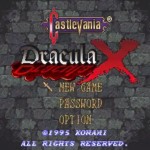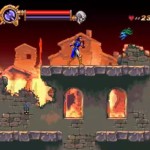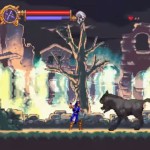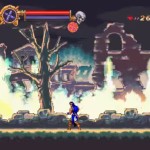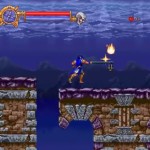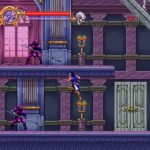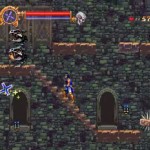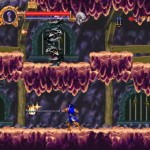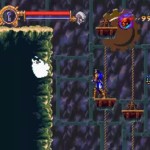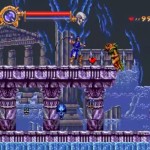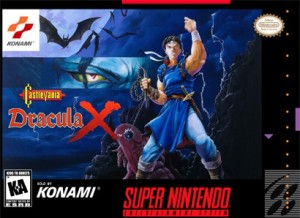
Author: John Legendoffzelda
For all the edge and shimmering visuals apparent throughout Castlevania: Dracula X, you can still see its creators reinstating the series’ strict roots and doing so with relative panache. No swinging from hooks, no whipping in a direction that isn’t directly in front of you, and more explicit focus on enemy placement and whether you want to pick up the holy water in place of the axe. In a turnaround from the accessible expansion of ideas implemented in Super Castlevania IV, with its multipurpose whip and extra features, Konami creates an installment in their front-running franchise where they evoke the taut exactitude of its NES days. For some Super Nintendo-playing Castlevania enthusiasts, the jump from the 1991 installment’s crossover frills to this game’s more hard-earned experience can be too overwhelming or strange for its own good. On the other hand, it’s the sort of game they were anticipating without really knowing it. While the game works as an approximation of what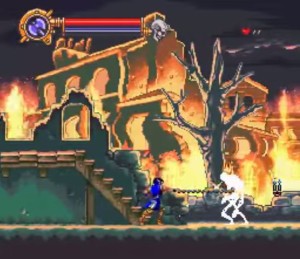 snapped into place with fans at the very beginning, it also falls closer to the first side of this divide than the other.
snapped into place with fans at the very beginning, it also falls closer to the first side of this divide than the other.
As Count Dracula rises from his eternal resting place once again, so must arise a brave individual to defeat him. Meet Richter Belmont, descendant of Simon and the fiance of Anett, the woman he loves. After the Count kidnaps Anett and her sister Maria, he must escape his destroyed village and travel through Dracula’s newly restored keep to vanquish him. As with previous installments, Richter’s journey is besieged by hordes of monsters, and the chain whip in his hand is the primary means of defending himself. The whip can knock down floating lanterns that yield hearts and secondary weapons, and they’re just as useful as players remember. Now that the rules have reset to NES mode, they’ll need to figure out where they would be useful when whipping has little to no effect. Arcing weapons are good for enemies above, and the boomerang cross succeeds against enemies in the way. The castle is still full of treacherous spikes and breakable holes in the walls where life-replenishing meat lies in wait, and the castle grounds combine subterranean caves with haunted architectural interiors. In a sense, the conflict between Count Dracula and the Belmont line of vampire slayers has been kept the same while still being invigorating.
Technological advancements are what give this installment its vitality, and they manifest themselves in new, outstanding sights. At every opportune moment the game throws a 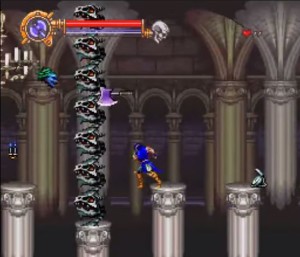 spectacle at the player as part of the action; stacks of fire-breathing T. Rex heads at which to throw an axe, a collapsing bridge outside the castle gate, and a rippling wall of fire in the very first level. There’s a wide Atlantean-style grotto with rubbery demon skulls made of water, and a glowering Taurus that lumbers after Richter through a certain level section. The game as a whole has an eye-catching, almost Dick Tracy-like color scheme with rooms of stony gray, enemies of red and purple, and Richter’s sapphire-blue tunic. It extends to the dual health bars for Richter and the stage boss, designed to resemble glass vials with a skull adorning the boss’ stamina. Throughout it all, old series tunes play over the action in full 16-bit force. The presentation element marks this game as the 1986 Castlevania redone for the new generation, while the enhanced tech allows for new spins on combat. Richter is able to backflip away from an undesirable situation, and his new ‘Item Crash’ move allows him to bombard enemies with whatever secondary weapon he’s holding. Whenever that move connects, it’s quite a storm of damage and it effectively neutralizes whatever danger it targets.
spectacle at the player as part of the action; stacks of fire-breathing T. Rex heads at which to throw an axe, a collapsing bridge outside the castle gate, and a rippling wall of fire in the very first level. There’s a wide Atlantean-style grotto with rubbery demon skulls made of water, and a glowering Taurus that lumbers after Richter through a certain level section. The game as a whole has an eye-catching, almost Dick Tracy-like color scheme with rooms of stony gray, enemies of red and purple, and Richter’s sapphire-blue tunic. It extends to the dual health bars for Richter and the stage boss, designed to resemble glass vials with a skull adorning the boss’ stamina. Throughout it all, old series tunes play over the action in full 16-bit force. The presentation element marks this game as the 1986 Castlevania redone for the new generation, while the enhanced tech allows for new spins on combat. Richter is able to backflip away from an undesirable situation, and his new ‘Item Crash’ move allows him to bombard enemies with whatever secondary weapon he’s holding. Whenever that move connects, it’s quite a storm of damage and it effectively neutralizes whatever danger it targets.
The thing to note is this move doesn’t always connect. Certain bosses and smaller foes along the way can avoid or even block your shots depending on the conditions. It becomes grating when they miss too often, since each use takes ten hearts and hearts aren’t the easiest items to find. It’s possible to backtrack through certain areas, but knowing what kind of game this is, it isn’t worth the trouble. But apart from this problem spot, there’s the curious detail of how this super move replaces the double-shot and triple-shot enhancements for the extra weapons from the previous games. Other installments enhanced combat by letting the player fire multiple boomerangs or axes while only using one heart, a mechanic that in comparison sounds more sensible and less wasteful than its replacement here even if Richter gets to strike an action pose while performing it.
On the subject of vestigial ideas in this game, the backflip makes little sense to use. It can help Richter skip a staircase or two on the way to an above platform, but its lethargy and precise button input don’t help him get out of the way in time for an enemy not to strike him. With a certain enemy, one whom the backflip seems designed for, none of the weapons get past their blocking techniques without Richter getting dangerously close to them, at which point it’s a better solution to just whip them. The enemies explode into flames when whipped as they normally do, which is always a cool sight, but somehow there’s more of an ease in using the whip that encourages using it primarily. The reason seems to be that it isn’t affected by the need for conservation like the weapons, considering their moments of ineffectiveness or how difficult the extra moves can make it to maintain your heart collection. Being a downgraded port of a PC Engine title, the game offers one more extra idea by having the path to Dracula branch in multiple directions. Taking them allows you to rescue Anett and Maria and doesn’t affect anything but the series’ canon, which means their only purpose is to explore more of the vistas hidden within the castle.
isn’t affected by the need for conservation like the weapons, considering their moments of ineffectiveness or how difficult the extra moves can make it to maintain your heart collection. Being a downgraded port of a PC Engine title, the game offers one more extra idea by having the path to Dracula branch in multiple directions. Taking them allows you to rescue Anett and Maria and doesn’t affect anything but the series’ canon, which means their only purpose is to explore more of the vistas hidden within the castle.
This game is built largely on the nostalgia for its earliest predecessors, but it also lives too closely by that nostalgia than it realizes. When it tries being its own thing, replacing older mechanics with its own or trying new ways of expanding on the gameplay as it often does, it falters. The worst parts of Castlevania: Dracula X are watching it adhere to its old-school core and simultaneously vie for a series growth that it can only reach when it moves beyond that core. It’s a case of video game concept adolescence where the game’s two main ideas are just swished around like oil and vinegar, not cohering the way they should. But on the more positive side of this, a side that redeems the game, it still means the original Castlevania format of cautious strategy stirred into quick-witted action is present here, providing as good of a basis as it has with previous titles. Those games organized enemies and traps in a cerebral manner that made players concentrate on their dexterity and ability to perceive their surroundings, limiting their in-game abilities to make them focus. When it remembers how that focus succeeds as its own type of game design, this sequel better carries on its series’ tradition.
Castlevania: Dracula X is a neat endeavor, even though it’s one that catches Konami with one foot in the past and the other foot in the future. Super Castlevania IV is ultimately the better Super Nintendo installment because of its commitment to, and execution of, its own gameplay alterations within its series. This principle applies to the NES titles as well. But it can be argued this game looks even better than any of them, and as a throwback it does right by its ancestors. Simon would be pleased.
Four out of five stars.
COMMENT HERE
HAVE AN OPINION?
You can submit reviews for games on the Submissions page.






